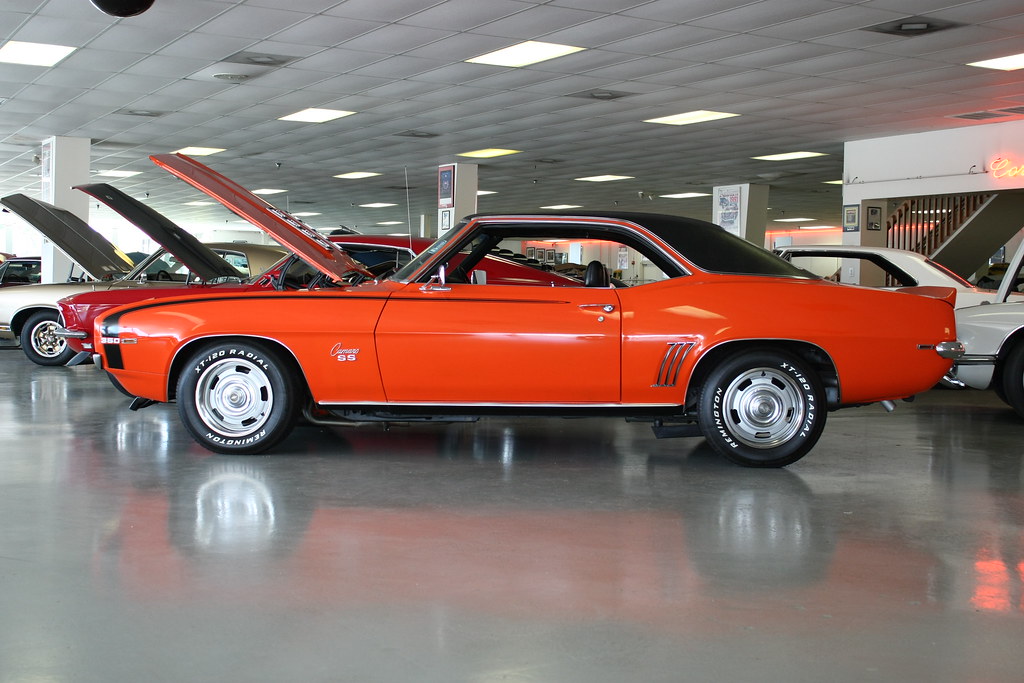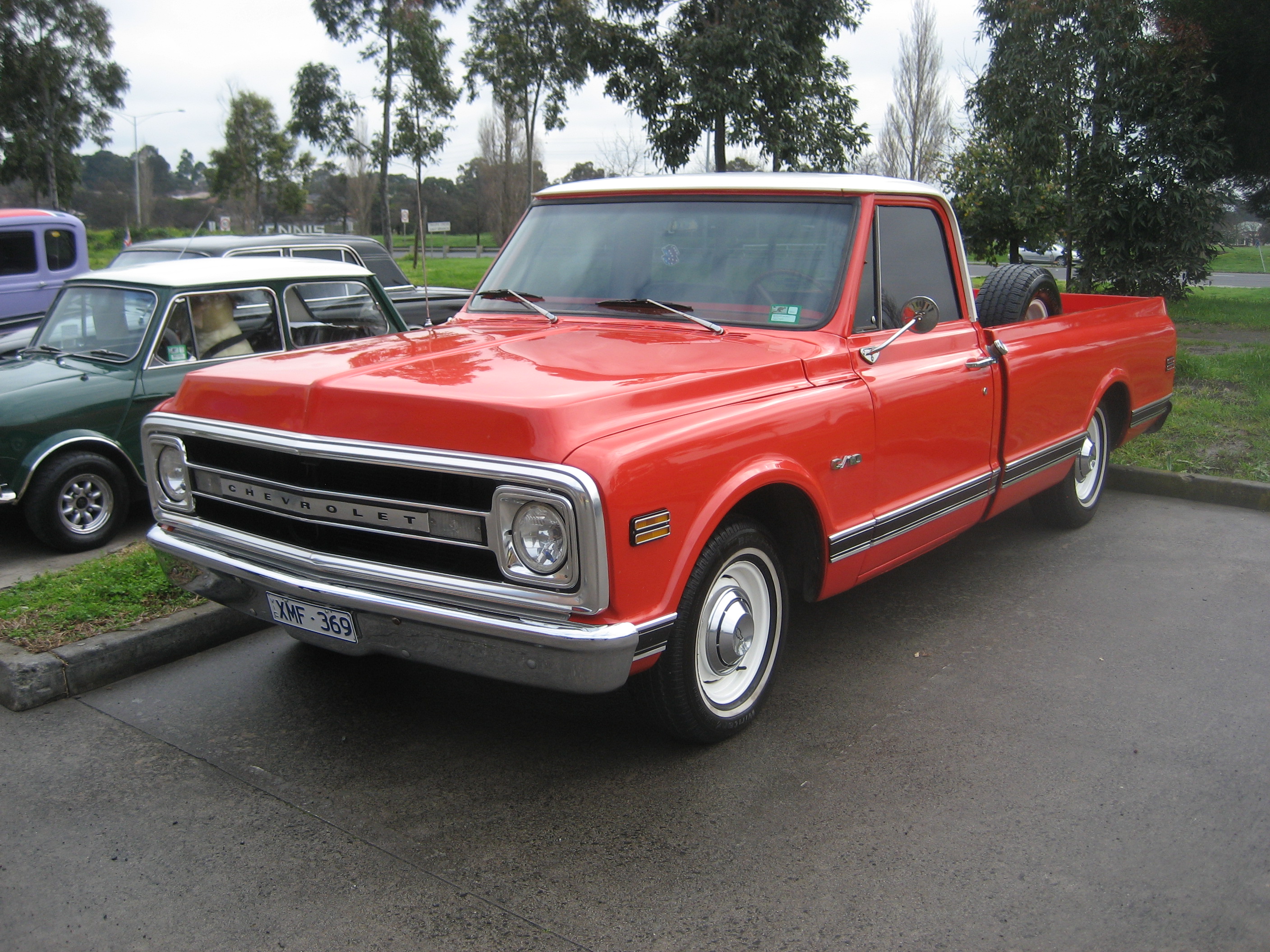
The 1970s. What a wild ride for the automotive world, especially when it came to pickup trucks. While some models like the mighty Chevrolet C10 and the rugged Ford F-Series cemented their places in history as undisputed icons, there was a whole other breed of truck cruising the roads—vehicles that, for one reason or another, didn’t quite achieve the same legendary status. These weren’t necessarily failures; rather, they were often ahead of their time, a little too quirky, or simply overshadowed by their more famous siblings. They represent a fascinating chapter in truck history that’s often overlooked.
Today, we’re peeling back the layers of dust and time to shine a spotlight on these truly neglected ’70s favorites. We’re talking about the trucks that only a true old-timer, someone who lived and breathed that era, would instantly recognize. These are the unsung heroes, the niche offerings, and the bold experiments that, while perhaps not defining an era, certainly added significant color and character to it. They pulled trailers, ran errands, and did the dirty work without ever asking for attention, and it’s high time they got some.
Many of these forgotten gems have sadly vanished from highways and backroads, their stories fading into obscurity. But here at our publication, we believe every piece of automotive history deserves its moment in the sun. So, buckle up as we embark on a journey through the first batch of these remarkable machines, delving into what made them special, why they’re rarely seen today, and why they’re still worth remembering.

1. 1972 Chevrolet LUV
Before the compact truck market exploded, Chevrolet had a surprisingly scrappy answer to the ’70s gas crunch: the 1972 Chevrolet LUV. This isn’t your grandad’s big-block Chevy pickup; the LUV was a small, import-based pickup, effectively giving the Bowtie brand a foothold in an emerging segment that would soon become incredibly popular. It was a clear sign that fuel efficiency and smaller footprints were starting to matter, even in truck-centric America.
Underneath its modest hood, the LUV ran on a 1.8-liter Isuzu engine, a testament to its international origins. It was as barebones as you could get, featuring a manual transmission, rear-wheel drive, and an interior that championed function over frills. This wasn’t a luxury cruiser; it was an honest, no-nonsense utility vehicle designed to be economical and practical, a stark contrast to the burgeoning trend of trucks becoming personal vehicles.
Despite its diminutive stature and straightforward approach, the LUV sold surprisingly well for its size. It resonated with buyers who needed a light-duty hauler that wouldn’t break the bank at the pump. While it might not have the raw power or imposing presence of its domestic full-size counterparts, the LUV carved out its own niche, proving that good things can indeed come in smaller, more efficient packages. It’s a truck that often gets forgotten in the shadow of its larger, more celebrated siblings, but its importance in Chevy’s history is undeniable.
Car Model Information: 1981 Chevrolet Luv Truck
Categories: All set index articles, Articles with short description, Cars introduced in 1972, Chevrolet trucks, Commons category link from Wikidata
Summary: The Chevrolet LUV and the later Chevrolet LUV D-Max were light pickup trucks designed and manufactured by Isuzu and marketed in the Americas since 1972 by Chevrolet over four generations as rebadged variants of the Isuzu Faster and D-Max.
LUV is an acronym for “light utility vehicle”.
Get more information about: Chevrolet LUV
Buying a high-performing used car >>>
Brand: Chevrolet Model: LUV
Price: $11,000 Mileage: 63,900 mi.
Read more about: 10 Iconic American Cars That Are Simply Too Dangerous for Today’s Roads

2. 1973 Ford Courier
Much like the Chevrolet LUV, the 1973 Ford Courier was another early contender in the burgeoning small-truck segment, stepping in to fill that compact hauler gap long before the Ford Ranger ever made its debut. It was a fascinating blend of international cooperation and domestic branding, truly a product of its era. This little pickup showcased Ford’s willingness to look beyond its own stables to meet evolving market demands, especially concerning fuel economy and a more manageable size.
While it proudly wore the blue oval badge, the Courier was actually designed by Mazda, inheriting a reputation for simple mechanics and reliable mileage. Its 1.8-liter engine was a workhorse, not a muscle car engine, providing efficient power for light hauling and daily duties. The mechanical simplicity meant fewer things could go wrong, appealing to owners who prioritized durability and cost-effective operation over sheer horsepower.
Interestingly, the styling of the Ford Courier felt distinctly American, despite its Japanese engineering heart. It managed to blend in with its bigger, homegrown brethren while offering the undeniable advantages of Japanese efficiency. This dual identity makes the Courier a particularly intriguing footnote in ’70s truck history—a practical, unassuming vehicle that often gets overlooked today, but represented a significant shift in Ford’s product strategy and the broader automotive landscape.
Car Model Information: 1974 Ford Courier Restored Pro-Street Truck
Name: Ford Courier
Caption: Ford Brazil
Production: 1952–1960,1971–2013
Manufacturer: Ford Motor Company
Successor: Ford Ranger (North America),Ford Ranger (T6)
ModelYears: 1952–1960 (sedan delivery),1972–2007 (compact pickup),1991–2002 (compact panel van),1998–2013 (coupe utility)
Categories: All articles needing additional references, Articles needing additional references from May 2012, Articles with short description, Commons category link from Wikidata, Coupé utilities
Summary: Ford Courier is a model nameplate used by Ford since the early 1950s. The Courier moniker has been used on a variety of vehicles all around the world since it was first used in North America for a sedan delivery. The Courier nameplate was also used by Ford for a series of compact pickup trucks (produced by Mazda) and would also see use by Ford of Europe denoting a Fiesta-based panel van. Ford Brazil used the nameplate for a Fiesta-based coupe utility pickup marketed across Latin America.
During the 2000s, the Courier pickup truck was replaced by the Ranger nameplate (which replaced the Courier in North America for 1983); the Courier panel van was replaced by the Ford Transit Connect in 2002. For 2014, the stand-alone Courier name was withdrawn, but returned as the Transit Courier, the smallest vehicle of the Ford Transit van series.
Get more information about: Ford Courier
Buying a high-performing used car >>>
Brand: Ford Model: Courier
Price: $12,997 Mileage: 12,485 mi.
Read more about: 13 Automotive Aberrations So Unforgettable, They Should’ve Been Forgotten

3. 1975 Dodge D100 Warlock
Now, if “neglected” means “not as widely remembered as it should be,” then the 1975 Dodge D100 Warlock fits the bill perfectly. This truck wasn’t subtle; it was an enigma wrapped in mystique, a truly audacious statement on wheels. As part of Dodge’s legendary “Adult Toys” line, the Warlock was conceived for those who craved a truck with serious personality, a vehicle that wasn’t afraid to turn heads and challenge conventions.
Visually, the Warlock was a striking presence. It typically came in a bold black paint job, dramatically complemented by intricate gold pinstriped accents that gave it an air of mystery and allure. Add in those distinctive wood accents, often on the bed rails, and thick chrome bumpers, and you had a truck that looked like it belonged in a movie chase scene. It wasn’t just a truck; it was a character, something a stuntman might drive, and that was exactly the point Dodge was aiming for.
Beneath all that audacious flair, the Warlock packed a burly V8 engine, ensuring it was as tough and capable as it looked. This wasn’t merely a show pony; it combined serious function with an undeniable dose of style, a philosophy that Dodge expertly applied across its “Adult Toys” line. Today, the Warlock stands as a true collector’s gem, prized for its distinctive character, its limited production run, and the sheer audacity of its design, proving that even a “neglected” truck can still hold immense appeal for those who truly appreciate automotive artistry.
Car Model Information: 2025 Audi Q7 55 Premium Plus
Name: Dodge D series
Manufacturer: Chrysler Corporation
Aka: Dodge Ram (1980–1993), Dodge W series (4×4 models), Dodge Power Ram (4×4 models from 1980–1993)
Predecessor: Dodge C series
Successor: Ram pickup
Class: pickup truck
Production: 1960–1993
Platform: Chrysler AD platform
Assembly: Warren Truck Assembly,Warren, Michigan
BodyStyle: truck
Layout: Front-engine, rear-wheel-drive layout,rear-wheel drive,Front-engine, four-wheel-drive layout,four-wheel drive
Categories: 1970s cars, 1980s cars, All-wheel-drive vehicles, All articles needing additional references, All articles with unsourced statements
Summary: The D series (also called D/W series) is a line of pickup trucks that was sold by Dodge from October 1960 to September 30, 1993. The same basic design was retained until the October 1993 introduction of a completely redesigned Ram. The D/W series shared its AD platform with the Dodge Ramcharger/Plymouth Trail Duster twins. Two-wheel-drive (4×2) models were designated D, while four-wheel-drive (4×4) models were designated W.
Get more information about: Dodge D series
Buying a high-performing used car >>>
Brand: Dodge Model: D100 Warlock
Price: $55,675 Mileage: 20,490 mi.

4. 1977 GMC Caballero
For those who remember the 1970s, the Chevrolet El Camino is an iconic nameplate, a car-truck hybrid that captured the imaginations of many. But what about its often-forgotten sibling? The 1977 GMC Caballero didn’t exactly set sales records, largely overshadowed by Chevy’s better-known version. It was GMC’s take on combining car comfort with pickup utility, yet for reasons of brand recognition or marketing, buyers frequently stuck with the familiar Chevrolet. This makes the Caballero a prime candidate for our “neglected” list.
Despite its struggles to capture the market’s full attention, the Caballero was a perfectly capable and intriguing vehicle. It featured potent V6 and V8 options under the hood, offering respectable power for both cruising and light hauling. For its time, it provided a surprisingly smooth ride, blending the comfort of a passenger car with the practical open-bed utility of a truck. It was designed to appeal to those who wanted the best of both worlds without committing to a full-size pickup.
Sadly, like many vehicles that didn’t become sales superstars, most Caballeros were driven hard until they gave out, or succumbed to the inevitable ravages of rust, especially in unforgiving climates. Finding a clean, well-preserved example today is a genuine rarity. The Caballero represents a fascinating “what if” in automotive history, a vehicle that offered a compelling package but ultimately faded into obscurity, waiting for old-timers and keen enthusiasts to recall its subtle charm and innovative spirit.
Car Model Information: 1986 GMC Caballero
Name: GMC Sprint / Caballero
Caption: 1975 GMC Sprint
Manufacturer: GMC (automobile)
ModelYears: 1971–1977 (GMC Sprint),1978–1987 (GMC Caballero)
Class: Coupé utility,Pickup truck
Layout: Front-engine, rear-wheel-drive layout
Categories: 1970s cars, 1980s cars, All articles needing additional references, Articles needing additional references from July 2018, Articles with short description
Summary: The GMC Sprint is a coupe utility/pickup that was produced by GMC for the 1971–1977 model years. The Sprint was renamed Caballero for the 1978 model year, and produced through 1987. The rear-wheel-drive car-based pickups were sold by GMC Truck dealers primarily in the United States and Canada as the GMC version of the Chevrolet El Camino. Trim designations, emblems, and wheel trim differentiate the GMC from the Chevrolet. The vehicles were built on the General Motors A platform through 1981; for 1982, it was re-designated the G platform as the A platform switched to front-wheel drive.
Get more information about: GMC Sprint / Caballero
Buying a high-performing used car >>>
Brand: GMC Model: Caballero
Price: $29,000 Mileage: 20,081 mi.
Read more about: The 11 Iconic Rides We’re Passionately Pining For: A MotorTrend Wishlist for the Ultimate Automotive Revival

5. 1978 Jeep Honcho
When you hear “Jeep” from the 1970s, images of rugged utility and off-road prowess often come to mind. The 1978 Jeep Honcho, however, added a significant dose of personality and flash to that formidable foundation. This wasn’t just another work truck; it was a statement. With its flashy decals and wide-track axles, the Honcho had some serious attitude, unapologetically appealing to a specific demographic.
Jeep marketed the Honcho straight at younger drivers—those with a bit of money in their pockets and a serious appetite for dirt and adventure. The bold graphics and aggressive stance made it clear this truck was ready for anything, from city streets to challenging trails. It was designed to exude a sense of freedom and rugged individualism, a perfect fit for the adventurous spirit of the era.
Underneath the eye-catching exterior, these vehicles came equipped with powerful AMC V8s, ensuring there was plenty of grunt to back up the bold looks. Optional Quadra-Trac 4WD systems meant they were exceptionally capable off-road, able to conquer rough terrain with relative ease. The trade-off, as many ’70s enthusiasts will tell you, was that they could be hard on gas, a factor that likely contributed to their eventual “neglected” status as fuel prices became a larger concern. Still, the Honcho remains a testament to Jeep’s willingness to blend capability with flamboyant style.
Read more about: Unveiling the Unseen: Why a Pristine 1979 Ford Bronco Ranger XLT Represents Peak Collectibility
6. 1971 Ford F-250 Camper Special
Before dedicated RVs became commonplace, many adventurers and families relied on truck bed campers to explore the open road. Enter the 1971 Ford F-250 Camper Special, a truck specifically engineered to make those road trips and outdoor excursions as smooth and reliable as possible. This wasn’t just a standard F-250; it was a purpose-built beast, designed to handle the extra weight and demands of a full-size slide-in camper.
To support its specialized role, the Camper Special featured a longer wheelbase, providing greater stability with a heavy load in the bed. It also came equipped with a beefier suspension system, ensuring that the ride remained composed even when fully laden. A higher-output alternator was another crucial upgrade, capable of powering the various accessories and creature comforts that campers demanded, from interior lights to small appliances. These thoughtful engineering choices made it the go-to choice for those who lived for the open road.
These trucks were true workhorses, built for a life of hard labor and adventure. They spent their lives hauling gear, towing trailers, and clocking high mileage across vast distances. This relentless utility, while a testament to their durability, also means that clean, well-maintained examples of the 1971 F-250 Camper Special rarely surface today. They were used until they couldn’t be used anymore, a testament to their reliability but also a reason why they are now a “neglected” gem, waiting to be rediscovered by those who appreciate their specialized purpose and rugged history.
Car Model Information: 2016 Ford F-250 XL
Name: Ford F-Series
Caption: 2022 Ford F-150 Lariat Luxury
Manufacturer: Ford Motor Company
Aka: Ford Lobo (Mexico, 1992–present)
Production: 1948–present
Class: Pickup truck#Full-size pickup truck
Layout: Front-engine, rear-wheel-drive layout,rear-wheel drive
Predecessor: 1941 Ford
Categories: All-wheel-drive vehicles, All Wikipedia articles written in American English, All articles that may contain original research, All articles with unsourced statements, Articles that may contain original research from September 2020
Summary: The Ford F-Series is a series of light-duty trucks marketed and manufactured by the Ford Motor Company since model year 1948 as a range of full-sized pickup trucks — positioned between Ford’s Ranger and Super Duty pickup trucks. Alongside the F-150 (introduced in 1975), the F-Series also includes the Super Duty series (introduced in 1999), which includes the heavier-duty F-250 through F-450 pickups, F-450/F-550 chassis cabs, and F-600/F-650/F-750 Class 6–8 commercial trucks.
Get more information about: Ford F-Series
Buying a high-performing used car >>>
Brand: Ford Model: F-250
Price: $21,480 Mileage: 52,834 mi.
Read more about: Cruising in These 14 Classic Trucks? Here’s What Road Enthusiasts Secretly Think About You.
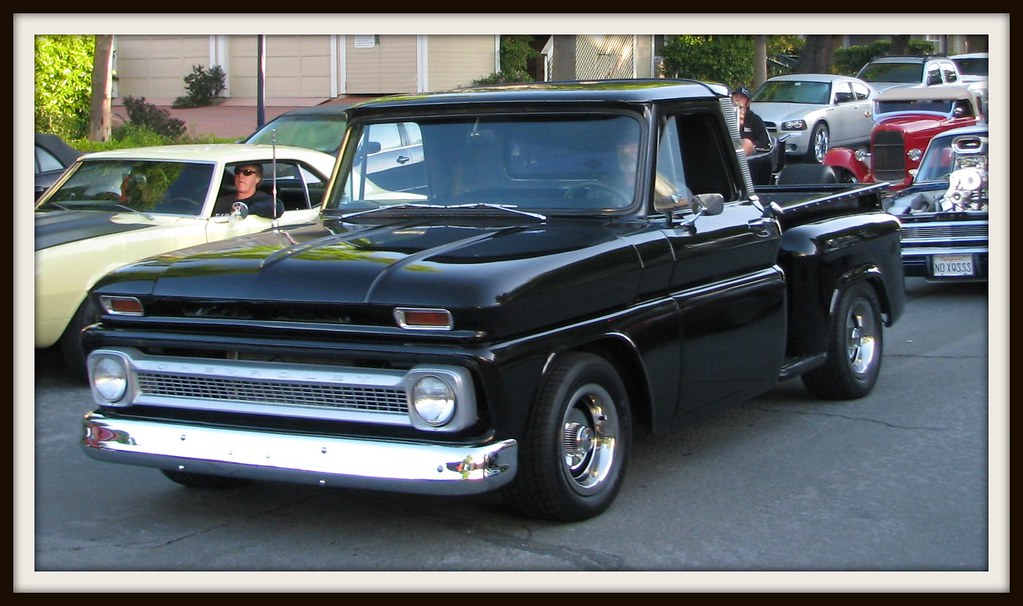
7. 1974 Chevrolet C10 Stepside
The Chevrolet C10, in its various forms, is undeniably an icon of ’70s trucking. But within that revered lineage, the 1974 C10 Stepside offers a particular flavor that, while distinct, often gets overshadowed by its Fleetside counterpart. This truck had some serious attitude, a stylistic departure that leaned into a more classic, utilitarian aesthetic, yet still delivered that signature Chevy appeal.
What set the Stepside apart were its angular, separate fenders over the rear wheels, combined with those classic wooden bed slats. This design wasn’t just for show; it harked back to an earlier era of truck design, giving it an unmistakable stance and a rugged, no-nonsense appeal. It was a choice for buyers who appreciated that traditional, almost artisanal look, rather than the smoother, integrated panels of the Fleetside.
Under the hood, buyers had their pick of reliable straight-sixes and robust small-block V8s, engines known for being easy to maintain and relatively dependable. However, these trucks, despite their solid mechanicals, weren’t always built for endless punishment. Many 1974 C10 Stepsides were used hard as actual work rigs, often stored outdoors, making them highly susceptible to rust. This combination of hard labor and environmental exposure means that finding a truly pristine example today is a difficult task, contributing to its “neglected” status, even within the beloved C10 family. It’s a shame, as their distinctive silhouette perfectly embodies a specific, charismatic facet of ’70s truck culture.
Continuing our journey through the forgotten corners of ’70s truck history, we’ve still got plenty of intriguing rides to unearth. These next eight vehicles further demonstrate the era’s wild experimentation and the diverse needs of truck buyers, from those seeking a touch of class to those who just needed an unkillable workhorse. Buckle up, because these are the trucks that truly test your old-timer bona fides.
Car Model Information: 2025 Audi Q7 55 Premium Plus
Name: Second generation (Action Line)
Caption: 1970 Chevrolet C10 Fleetside
ModelYears: 1967–1972
Related: Chevrolet K5 Blazer,Chevrolet Suburban
Assembly: Baltimore Assembly,Baltimore,Flint Truck Assembly,Flint, Michigan,Fremont Assembly,Fremont, California,Janesville Assembly,Janesville, Wisconsin,Lakewood Assembly,Lakewood Heights, Atlanta,Atlanta, Georgia,Pontiac West Assembly,Pontiac, Michigan,St. Louis Truck Assembly,St. Louis, Missouri,North Tarrytown Assembly,North Tarrytown, New York,Oshawa Truck Assembly,Oshawa, Ontario,Canada,San Martín, Buenos Aires,Argentina,Arica,Chile
Engine: ubl
Transmission: Powerglide,automatic transmission
Wheelbase: 115 in
Abbr: on (Longhorn Stepside)
Length: 188.5 in
Predecessor: Chevrolet C/K (first generation)
Successor: Chevrolet C/K (third generation)
Type: Light Truck,Medium Truck
Manufacturer: Chevrolet (General Motors),GMC (General Motors)
Platform: GM C/K (Action Line)
BodyStyle: 2-door pickup truck,2-door chassis cab truck
Designer: Bill Mitchell (automobile designer)
Categories: Articles with short description, Chevrolet trucks, Commons category link from Wikidata, Short description is different from Wikidata, Short description matches Wikidata
Summary: The second generation of the C/K series is a range of trucks that was manufactured by General Motors. Marketed by both the Chevrolet and GMC divisions from the 1967 to 1972 model years, this generation was given the “Action Line” moniker by General Motors (the first-generation C/K did not receive such a name). As with its predecessor, the second generation C/K included full-size pickup trucks, chassis cab trucks, and medium-duty commercial trucks.
The Action Line C/K marked the expansion of the General Motors utility vehicle range, as the Chevrolet Suburban (GMC Carryall) utility wagon was joined by the Chevrolet K5 Blazer (GMC Jimmy) off-road vehicle. A shorter-wheelbase version of the K-series pickup truck, the open-top Blazer/Jimmy was among the first widely produced sport-utility vehicles. This generation marked the debut of the Chevrolet Cheyenne and GMC Sierra nameplates; making their debuts as trim levels, the Cheyenne and Sierra are both used by GM to this day in current production.
Produced by multiple sites across the United States and Canada, the model line was also produced in South America.
Get more information about: Chevrolet C/K (second generation)
Buying a high-performing used car >>>
Brand: Chevrolet Model: C10 Stepside
Price: $55,675 Mileage: 20,490 mi.

8. 1976 Dodge Adventurer SE
Now, if you thought Dodge’s ‘Adult Toys’ line like the Warlock was all about wild graphics, think again. The 1976 Dodge Adventurer SE proved that the brand could also offer something a bit more refined, without sacrificing that inherent truck toughness. This wasn’t your run-of-the-mill pickup; it was designed for those who wanted a splash of class and comfort in their daily hauler, an upscale experience before ‘luxury truck’ was even a common phrase. It’s almost criminal how many people forget this truck’s subtle charm.
Sporting a two-tone paint job that really made it pop, the Adventurer SE stepped up the interior game significantly. We’re talking plush bucket seats, a dashboard adorned with woodgrain accents, and chrome strategically placed where it mattered most, adding a touch of sophistication that was uncommon for pickups of the era. It was a clear signal that trucks weren’t just for the job site anymore; they were becoming vehicles people genuinely wanted to spend time in, blurring the lines between utilitarian and personal transport.
Underneath all that polished flair, however, this was still a true Dodge truck. It came packing either a reliable Slant-Six or a beefy V8 engine, ensuring it had the grunt to handle whatever tasks its owners threw at it. Whether it was hauling a load to the lumberyard or cruising down the highway, the Adventurer SE delivered that quintessential Mopar power with an unexpected layer of comfort. Its blend of rugged capability and refined aesthetics makes it a prime example of a truck that offered more, but somehow still slipped through the cracks of collective memory.
Read more about: Buyer’s Remorse on Wheels: The 15 Vehicles Owners Most Regret Driving Off the Lot

9. 1979 Ford Ranchero GT
Ah, the ’70s, an era when car manufacturers loved to blend genres, and the 1979 Ford Ranchero GT is a perfect, if somewhat quirky, example. This wasn’t just a pickup; it was a muscle car masquerading as a utility vehicle, a half-car, half-truck hybrid that screamed ‘look at me!’—even if today, most people just squint and wonder what exactly they’re looking at. It shared its platform with the Ford LTD II, giving it a car-like ride and undeniable street presence.
From its stacked headlights to its aggressive stance, the Ranchero GT certainly leaned into its muscle car aspirations. You could even get it with a seriously potent optional 400-cubic-inch V8, which, let’s be honest, made it more about burning rubber than hauling hay. It was a vehicle for those who wanted the style and performance of a coupe but occasionally needed to carry something that wouldn’t fit in the trunk. Talk about having your cake and eating it too, especially when that cake was a tire-shredding V8.
The thing about the Ranchero GT is that it was polarizing. People either absolutely loved its audacious design and genre-bending nature, or they just plain ignored it. And like many unique vehicles, once maintenance started to get expensive (as it often does with niche, performance-oriented machines), many of these beauties got sent to the great scrapyard in the sky. It’s a shame, really, because the Ranchero GT represents a bold, if ultimately niche, experiment in automotive design that deserves a lot more love today.
Car Model Information: 2025 Audi Q7 55 Premium Plus
Name: Ford Ranchero
Aka: Ford Falcon Ranchero , Ford Fairlane Ranchero , Meteor Ranchero
Caption: 1957 Ford Ranchero
Manufacturer: Ford Motor Company
Class: Full-size Ford
Production: 1957–1979
BodyStyle: coupe utility
Related: Ford Fairlane (North American),Ford Falcon (North American),Ford Galaxie,Ford Torino,Ford LTD II,Ford Durango
Layout: FR layout
Categories: All articles with unsourced statements, Articles with short description, Articles with unsourced statements from October 2025, CS1 Spanish-language sources (es), Commons category link from Wikidata
Summary: The Ford Ranchero is a coupe utility that was produced by Ford between 1957 and 1979. Unlike a standard pickup truck, the Ranchero was adapted from a two-door station wagon platform that integrated the cab and cargo bed into the body. A total of 508,355 units were produced during the model’s production run. Over its lifespan it was variously derived from full-sized, compact, and intermediate automobiles sold by Ford for the North American market.
During the 1970s, the Ranchero name was used in the South African market for a rebadged Australian Ford Falcon utility. Shipped from Australia in complete knock down (CKD) form, these vehicles were assembled in South Africa at Ford’s plant in Port Elizabeth. In Argentina, a utility version of the locally produced Ford Falcon was also called Ranchero.
The original Ranchero sold well enough to spawn a competitor from General Motors in 1959, the Chevrolet El Camino.
Get more information about: Ford Ranchero
Buying a high-performing used car >>>
Brand: Ford Model: Ranchero GT
Price: $55,675 Mileage: 20,490 mi.
Read more about: The 11 Iconic Rides We’re Passionately Pining For: A MotorTrend Wishlist for the Ultimate Automotive Revival
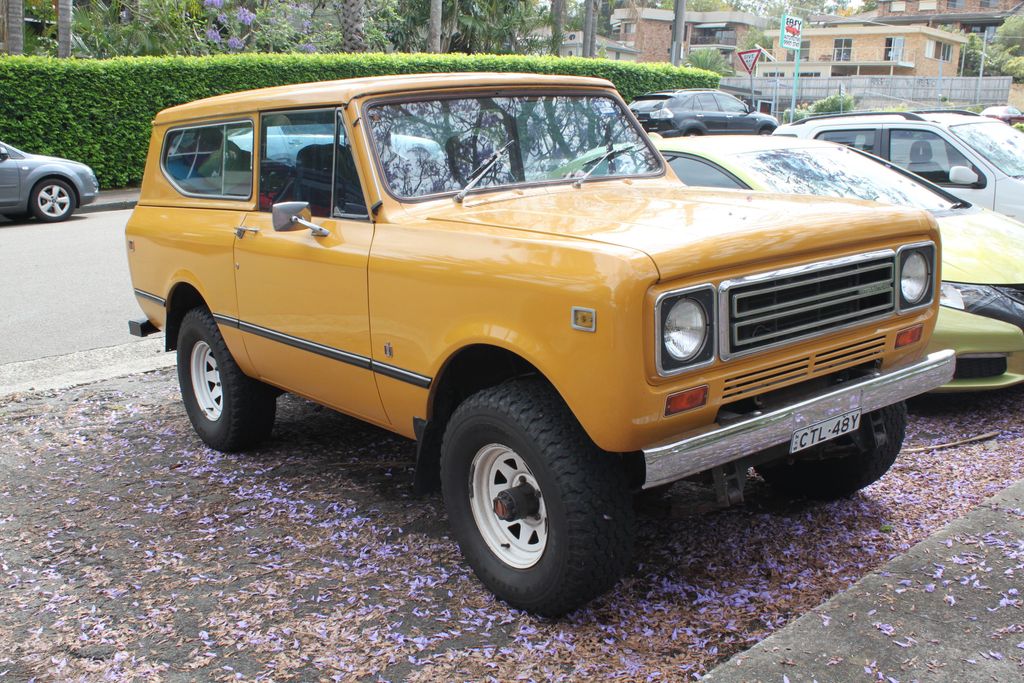
10. 1970 International Harvester 1200D
If you want a truck that truly embodies the phrase “no-nonsense,” then look no further than the 1970 International Harvester 1200D. IH wasn’t in the business of slick marketing or flashy gimmicks; they built trucks for one purpose: to work, and to work hard. This beast was the kind of truck you found on farms, construction sites, and anywhere else that required pure, unadulterated utility. It’s a prime example of how a truck could be incredibly capable, yet still largely unappreciated for its utilitarian virtues.
The 1200D came equipped with heavy-duty axles and leaf springs that were tough enough to handle the most brutal farm life, shrugging off loads that would make lesser trucks weep. Under its honest hood, you’d find a choice of big inline-sixes or powerful V8s, engines designed for torque and reliability, not for setting land speed records. This was a truck built to get the job done, day in and day out, without complaint or pretense.
Drivers of the era respected the 1200D for its sheer utility and bulletproof construction, not for its looks or its comfort. But therein lies its tragic tale of neglect: that very no-frills, function-over-form approach meant that as the ’70s rolled on and smoother, more passenger-friendly rides arrived, few people bothered to keep these rugged workhorses around. They were simply used up and discarded, fading into obscurity despite their undeniable durability and historical significance.
Car Model Information: 2025 Audi Q7 55 Premium Plus
Name: International Light Line pickup
Caption: International 150 (1974-1975)
Type: Pickup truck
Manufacturer: International Harvester
Aka: Dina D-1000 (1974-1976)
Production: 1969-1975
Class: Pickup_truck#Mid-size_pickup_truck
BodyStyle: pickup truck
Layout: Front-engine, rear-wheel-drive layout,Front-engine, four-wheel-drive layout
Related: International Travelall
Engine: {{convert,232,cuin,L,1,abbr=on,AMC straight-6 engine#232,Straight-six engine
Abbr: on
Transmission: Manual transmission,Borg Warner,3-speed Chrysler 727 automatic (1973-1975)
Wheelbase: convert
Length: 203.9 in
Width: 77.6 in
Weight: convert
Predecessor: International C series
Sp: us
Categories: 1960s cars, 1970s cars, Articles with short description, Commons category link is on Wikidata, International Harvester vehicles
Summary: The International Light Line pickups (also called the International D-Series (1000–1500)) replaced the C series as International’s Light Line range of pickup trucks in early 1969, for a shortened model year. The name started out as a simple continuation of the previous A-, B-, and C-series trucks. It was largely a rebodied version of its predecessors, with a square-rigged look very similar to the period Scout utility vehicle. The Travelall underwent parallel changes to the Light Line trucks. The light line of trucks was marked by a larger range of transmission and wheelbase options than any of its competitors, and in general the lineup aimed to maximize adaptability. The Light Line was also available as a bare chassis, for special purpose applications. Production ended in late April 1975, as a hard-pressed International chose to focus on the Scout and on heavier machinery.
Get more information about: International Light Line pickup
Buying a high-performing used car >>>
Brand: International Harvester Model: 1200D
Price: $55,675 Mileage: 20,490 mi.
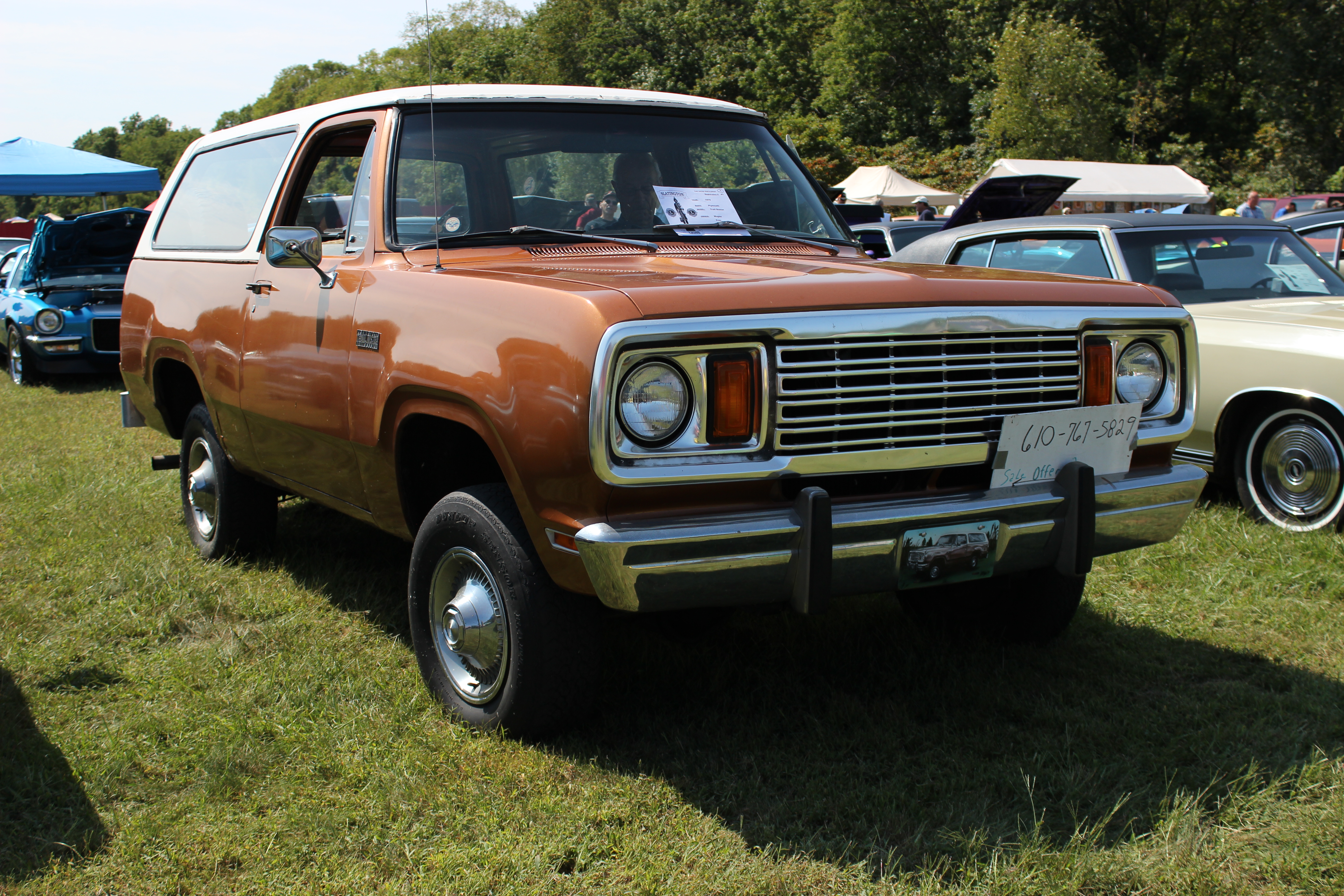
11. 1978 Plymouth Trail Duster Sport
Remember the Dodge Ramcharger? Of course you do, it’s an icon! But what about its Plymouth twin, the 1978 Plymouth Trail Duster Sport? Yeah, that’s what we thought. This full-size SUV (or truck-based utility vehicle, depending on how you look at it) mainly flew under the radar, forever living in the shadow of its more famous Mopar sibling and competitors like the Ford Bronco and Chevy Blazer. It’s a classic case of a perfectly capable vehicle just not catching on with the masses, leading to its current, neglected status.
Built on the exact same robust frame as the Ramcharger, the Trail Duster Sport offered all the rugged capabilities you’d expect. It featured full-time 4WD, making it a serious contender for off-road adventures, and—get this—a removable roof! Imagine the freedom of cruising with the top off, a perfect setup for outdoor weekends and soaking up the sun. Plus, you could spec it with powerful options like a 360 V8, ensuring there was plenty of muscle to tackle trails or tow toys.
Despite its appealing features and undeniable capability, the Trail Duster Sport never quite found its footing. It just couldn’t outshine the Bronco or Blazer in the public’s eye, and by the early ’80s, Plymouth wisely (or tragically, depending on your perspective) pulled the plug. Finding one of these today is like unearthing a forgotten treasure – a testament to Plymouth’s brief, but valiant, foray into the burgeoning SUV market that few remember.
Car Model Information: 2025 Audi Q7 55 Premium Plus
Name: Dodge Ramcharger
Aka: Plymouth Trail Duster
Manufacturer: Chrysler Corporation
Production: 1974–2001
Assembly: Warren, Michigan,United States
Class: Full-size,SUV
Platform: Front-engine, rear-wheel-drive layout,rear-wheel drive
BodyStyle: SUV
Predecessor: Dodge Town Panel and Town Wagon
Successor: Dodge Durango
Categories: 1980s cars, 1990s cars, All-wheel-drive vehicles, All articles needing additional references, Articles needing additional references from June 2019
Summary: The Dodge Ramcharger is a large sport utility vehicle built by Dodge from 1974 to 1993, based on a shortened-wheelbase version of the Dodge D series/Ram pickup chassis. A Plymouth version, named the Plymouth Trail Duster, offered from 1974 to 1981, was Plymouth’s only SUV.
The Ramcharger was mostly produced as a two-door, 4×4 vehicle, although a two-wheel-drive version was available. As a full-size SUV, it competed with the Chevrolet K5 Blazer and the 1978–1996 Ford Bronco.
The Ramcharger was discontinued at the end of the 1993 model year in North America. In Mexico, however, production continued until 1996. It was then brought back from 1999 to 2001, still as a two-door SUV and sharing the design of the contemporary Ram pickup. Approximately 30,000 were produced, with all examples being two-wheel-drive only.
In November 2023, Stellantis announced that the Ramcharger nameplate would be revived for a plug-in hybrid and extended-range electric vehicle truck version of the 2025 Ram 1500.
Get more information about: Dodge Ramcharger
Buying a high-performing used car >>>
Brand: Plymouth Model: Trail Duster
Price: $55,675 Mileage: 20,490 mi.
Read more about: Power and Pursuit: Exploring 12 Iconic Chrysler, Plymouth, and Dodge Police Cars That Defined Law Enforcement
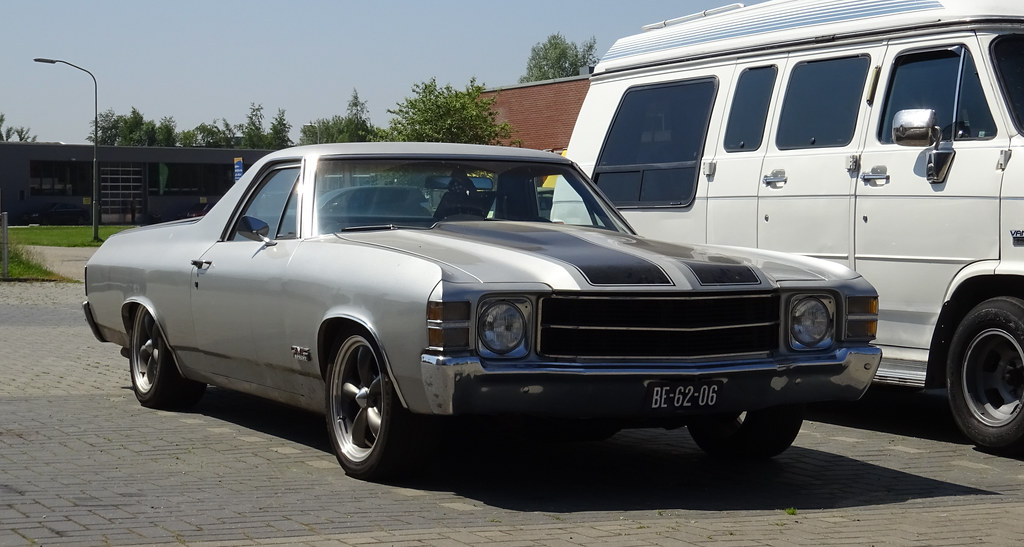
12. 1971 GMC Sprint
Just as GMC had its Caballero to counter the Chevrolet El Camino, they also offered the 1971 GMC Sprint, another car-truck hybrid that was destined to be the less-remembered twin. While the El Camino became a household name synonymous with that unique blend of muscle car attitude and light hauling utility, the Sprint struggled to carve out its own identity. It’s a real shame, because it offered much of the same cool factor, just under a different badge.
Under the hood, the Sprint followed a familiar formula. Base models were equipped with practical six-cylinder engines, perfect for economical daily driving and light duties. But for those with a need for speed and a love for American muscle, the Sprint SP versions packed serious V8 power, transforming this utility vehicle into a surprisingly quick cruiser. It was the perfect vehicle for someone who wanted a sporty ride but occasionally needed to pick up a refrigerator.
However, like many vehicles that didn’t achieve superstar status, the Sprint’s fate was often a hard life. Many were used as daily drivers, enduring years of wear and tear, and eventually succumbing to the inevitable ravages of rust, especially in regions with harsh winters. Today, finding a clean, well-preserved 1971 GMC Sprint is a rare treat, a nod to its utilitarian demise and its overlooked place in the annals of ’70s automotive history.
Car Model Information: 1976 GMC Sprint
Name: GMC Sprint / Caballero
Caption: 1975 GMC Sprint
Manufacturer: GMC (automobile)
ModelYears: 1971–1977 (GMC Sprint),1978–1987 (GMC Caballero)
Class: Coupé utility,Pickup truck
Layout: Front-engine, rear-wheel-drive layout
Categories: 1970s cars, 1980s cars, All articles needing additional references, Articles needing additional references from July 2018, Articles with short description
Summary: The GMC Sprint is a coupe utility/pickup that was produced by GMC for the 1971–1977 model years. The Sprint was renamed Caballero for the 1978 model year, and produced through 1987. The rear-wheel-drive car-based pickups were sold by GMC Truck dealers primarily in the United States and Canada as the GMC version of the Chevrolet El Camino. Trim designations, emblems, and wheel trim differentiate the GMC from the Chevrolet. The vehicles were built on the General Motors A platform through 1981; for 1982, it was re-designated the G platform as the A platform switched to front-wheel drive.
Get more information about: GMC Sprint / Caballero
Buying a high-performing used car >>>
Brand: GMC Model: Sprint
Price: $23,000 Mileage: 54,446 mi.
Read more about: The 11 Iconic Rides We’re Passionately Pining For: A MotorTrend Wishlist for the Ultimate Automotive Revival
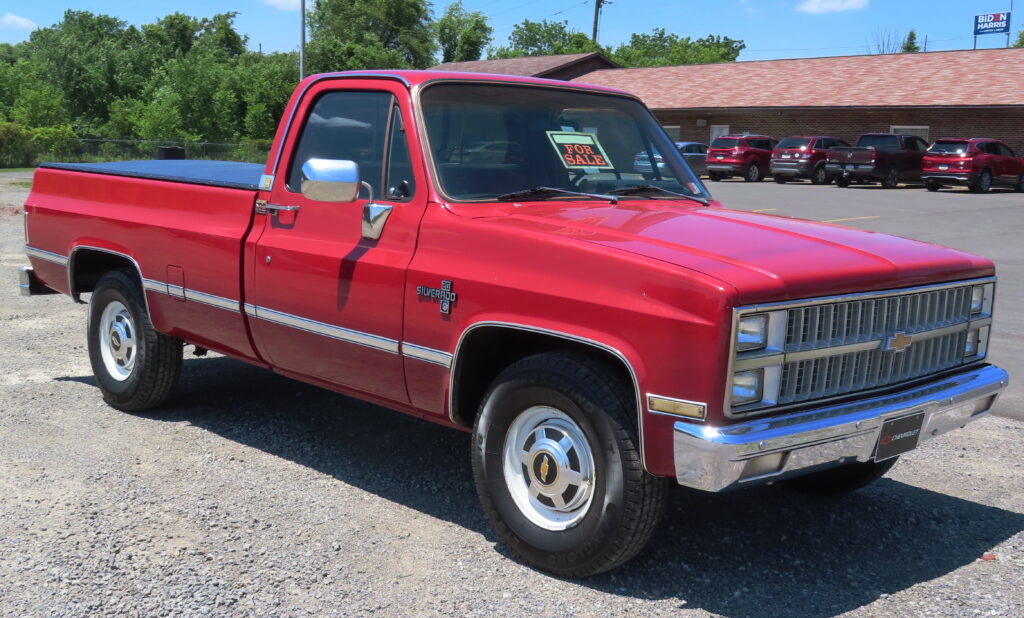
13. 1973 Chevrolet C20 Longhorn
While the Chevrolet C10 is undeniably an icon, its heavy-duty sibling, the 1973 Chevrolet C20 Longhorn, often gets overlooked in the enthusiast world. This wasn’t just any C20; the ‘Longhorn’ designation meant something special – extra bed space without needing a full-on dual rear wheel setup, making it an incredibly practical and robust choice for serious hauling. It was a truck built for work, plain and simple, and it delivered in spades.
To handle its increased capacity and longer wheelbase, the Longhorn featured a reinforced frame and heavy-duty springs, ensuring stability and durability under significant loads. And, as you might expect from a truck designed for serious work, it often came equipped with a big-block V8 under the hood, providing all the power and torque needed for towing large trailers or hauling heavy equipment. This truck meant business, without being overly flashy.
The bittersweet truth about these hard-working beasts is that their very utility contributed to their scarcity today. Many 1973 C20 Longhorns were used relentlessly in demanding roles, and unfortunately, they didn’t age particularly gracefully in wet climates. Rust, the perennial enemy of classic vehicles, took a heavy toll, making truly pristine examples a rare sight. It’s a testament to their work ethic that so few survived, but also a reason why this powerful, practical pickup is now a truly neglected gem.
Car Model Information: 1977 Chevrolet C20/K20 Cheyenne Camper Special
Name: Chevrolet and GMC C/K
Caption: 1986 GMC C-3500 Sierra Classic 3+3
Manufacturer: General Motors
Aka: GMC C/K,Chevrolet/GMC Full-Size Pickup,Chevrolet Silverado (1975–2002),GMC Sierra (1972–2002)
Production: 1959–2002 (United States),1959–2000 (Canada),1965–2002 (Mexico),1964–2001 (Brazil),1975–1982 (Chile), 1960–1991 (Argentina)
Class: Pickup truck,Medium-duty truck
Predecessor: Chevrolet Task Force
Successor: Chevrolet Silverado
ModelYears: 1960–2000 (C/K pickup trucks)
Categories: Articles with short description, CS1 Portuguese-language sources (pt), Cars introduced in 1959, Chevrolet trucks, Commons category link is on Wikidata
Summary: The Chevrolet C/K is a series of trucks that was manufactured by General Motors from the 1960 to 2002 model years. Marketed by both the Chevrolet and GMC divisions, the C/K series encompassed a wide range of vehicles. While most commonly associated with pickup trucks, the model line also included chassis-cab trucks and medium-duty trucks and served as the basis for GM full-size SUVs. Through its entire production, the model line competed directly against the Ford F-Series and the Dodge D series (later the Dodge Ram pickup).
Used for both the model branding and the internal model code, “C” denoted two-wheel drive, while “K” denoted four-wheel drive. Four generations of the C/K series were produced, including the GM monikered second-generation “Action Line” and third-generation “Rounded Line” vehicles (colloquially aka Square-Body trucks). For the fourth-generation (colloquially also known as OBS trucks), Chevrolet kept using the C/K designation while GMC revised its branding, changing to a singular GMC Sierra nameplate (C/K remained as an internal model code).
For South America, the model line was manufactured by General Motors de Argentina from 1960 to 1978, Sevel Argentina from 1986 to 1991, and General Motors Brazil, who produced versions of the model line for Brazil, Argentina, and Chile from 1964 to 2001.
As GM entered the 1990s, the company revised its truck ranges, replacing the medium-duty C/K trucks with the Chevrolet Kodiak/GMC TopKick for 1990. For 1999, GM replaced the fourth-generation C/K pickup trucks with an all-new model line; in line with GMC, Chevrolet dropped the C/K nameplate (in favor of a singular Chevrolet Silverado nameplate). Initially marketed with its successor, the final C/K pickup trucks were produced for the 2000 model year. From 2001 to 2002, the final vehicles of the C/K model line were medium-duty chassis cab trucks.
Get more information about: Chevrolet C/K
Buying a high-performing used car >>>
Brand: Chevrolet Model: C20
Price: $33,999 Mileage: 33,150 mi.
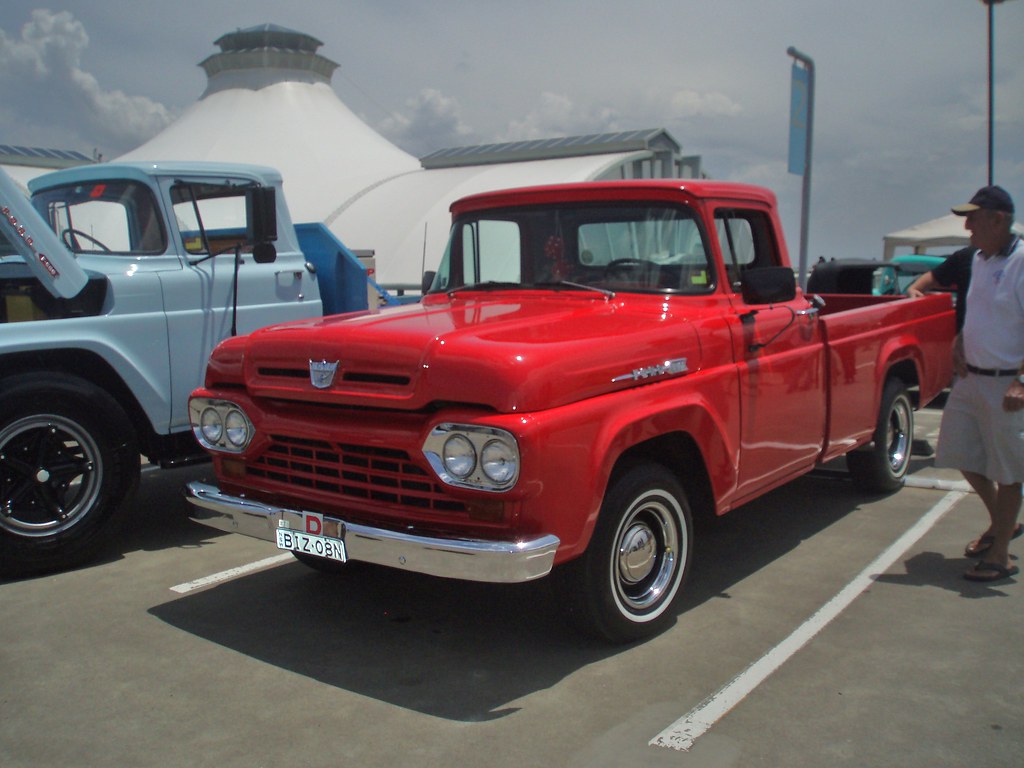
14. 1972 Ford F-100 Styleside
When we think of ’70s Ford F-Series trucks, the F-100 is a legend, but within that legend, the 1972 F-100 Styleside often finds itself slightly overshadowed. While other trims might have boasted more chrome or plush interiors, the Styleside was all about a clean, contemporary aesthetic, ditching the traditional separate step fenders for a smoother, integrated side panel. It was a subtle but significant design choice that appealed to a different kind of truck buyer.
Underneath that sleek exterior, the F-100 Styleside still delivered Ford’s trusty Twin I-Beam front suspension. This innovative setup was revolutionary for its time, providing a ride quality that was far superior to many competitors, blending capability with a surprising amount of comfort. Powering these workhorses were optional V8 engines that could pull or tow without blinking, solidifying the F-100’s reputation as a reliable and capable vehicle for a multitude of tasks.
Despite its solid engineering and versatile nature, the 1972 F-100 Styleside’s fate often mirrored that of many hardworking trucks: they ended up as dedicated work rigs, pushed to their limits, or became family hand-me-downs that slowly wore out over decades of loyal service. This relentless utility, while a testament to their build quality, also meant that pristine examples are now few and far between, earning it a spot on our list of beloved, yet oft-neglected, ’70s favorites.
Car Model Information: 1969 Ford F100 Base
Name: Ford F-Series
Caption: 2022 Ford F-150 Lariat Luxury
Manufacturer: Ford Motor Company
Aka: Ford Lobo (Mexico, 1992–present)
Production: 1948–present
Class: Pickup truck#Full-size pickup truck
Layout: Front-engine, rear-wheel-drive layout,rear-wheel drive
Predecessor: 1941 Ford
Categories: All-wheel-drive vehicles, All Wikipedia articles written in American English, All articles that may contain original research, All articles with unsourced statements, Articles that may contain original research from September 2020
Summary: The Ford F-Series is a series of light-duty trucks marketed and manufactured by the Ford Motor Company since model year 1948 as a range of full-sized pickup trucks — positioned between Ford’s Ranger and Super Duty pickup trucks. Alongside the F-150 (introduced in 1975), the F-Series also includes the Super Duty series (introduced in 1999), which includes the heavier-duty F-250 through F-450 pickups, F-450/F-550 chassis cabs, and F-600/F-650/F-750 Class 6–8 commercial trucks.
Get more information about: Ford F-Series
Buying a high-performing used car >>>
Brand: Ford Model: F-100
Price: $59,999 Mileage: 5,246 mi.
Read more about: Auto Royalty: Unveiling Chip Foose’s Masterpieces and the Personal Rides of a Custom Car King
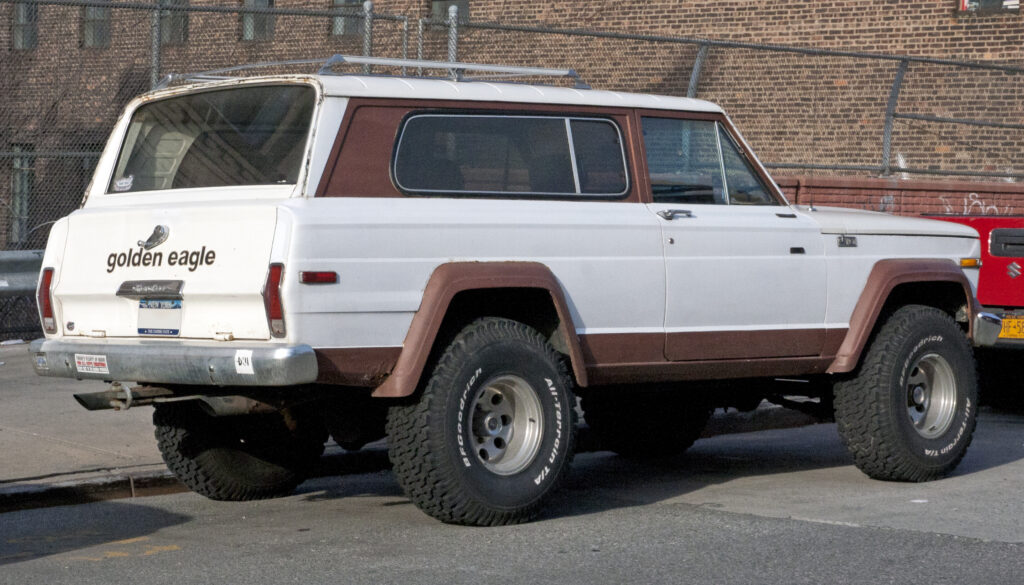
15. 1976 Jeep J10 Golden Eagle
If the 1978 Jeep Honcho was flashy, the 1976 Jeep J10 Golden Eagle was downright flamboyant, a true showstopper for its time! This truck was impossible to miss, an absolute explosion of ’70s style that screamed adventure from every angle. With its massive, iconic eagle decals splashed boldly across the hood and those unmistakable gold wheels, this was a truck built to make a statement and capture the essence of freedom on the open road and beyond.
The Golden Eagle wasn’t just about turning heads; it was meticulously crafted for off-road fans who demanded both flash and serious function. It carried Jeep’s robust AMC V8 lineup, providing ample power for any trail or towing task, ensuring it performed as boldly as it looked. And for those truly rugged adventures, the optional Quadra-Trac four-wheel drive system made it an unstoppable force, ready to conquer challenging terrain with confidence and undeniable swagger.
However, the passage of time hasn’t always been kind to these vibrant machines. While their spirit of exploration endures, surviving models often present a challenge for modern enthusiasts, frequently needing new floor pans due to rust and extensive electrical rewiring to bring them back to their former glory. This constant battle against the elements and neglect is precisely why the J10 Golden Eagle, despite its enduring charisma and distinctive design, remains a truly neglected classic, waiting for a dedicated old-timer to restore its adventurous shine.
So there you have it, folks – a deep dive into the ’70s truck landscape, uncovering some truly fantastic, yet frequently forgotten, machines. These trucks, from the subtle luxury of the Adventurer SE to the utilitarian grunt of the International Harvester, represent a vibrant, experimental era in automotive history. They weren’t always the superstars, but each one played a crucial role in shaping the trucks we drive today, proving that even the ‘neglected’ ones hold a treasure trove of stories and engineering prowess. It’s a testament to their grit and unique character that, for true old-timers, these aren’t just old trucks; they’re cherished memories, roaring back to life with every glance.”


